Reviews
Lawrence Gordon Clark
UK, 1972
Credits
Review by Matt Bailey
Posted on 08 October 2007
Source BFI DVD
Categories 31 Days of Horror
The long-standing British tradition of recounting ghost stories at Christmas may seem odd to Americans who are more accustomed to heart-warming Yuletide tales of domesticated caribou with bio-luminescent noses or precocious golems made of snow. I am not sure how or when this ghost story tradition first began, but it no doubt gained in popularity thanks to Charles Dickens, the venerable and prolific writer who published several Christmastime ghost stories. Notable among Dickens’ stories is the durable “A Christmas Carol,” which has been regularly (practically annually) adapted for the screen since 1901. But Dickens is not the only writer whose chillier stories have become a Christmas tradition. Between the years 1971 and 1978, the BBC ran an annual “Ghost Story for Christmas” short film. The series grew out of a very successful 1968 adaptation of Montague Rhodes (M.R.) James’s story, “Oh, Whistle, and I’ll Come to You, My Lad,” directed by Jonathan Miller for the long-running BBC arts program, Omnibus. James only wrote 31 ghost stories, but seven of them (in addition to “Whistle”) have been the basis of the BBC’s Christmas program, including the two most recent episodes from when the series was revived in 2005. One of the best BBC adaptations is of James’ story, “A Warning to the Curious.”
James has been called a “master of the glimpse of horror,” and it is true that his stories set a tone of heavy trepidation but give the reader only the briefest indication of the horrific instead of spelling it all out and spewing blood and guts across the page. It is a technique familiar to all fans of Gothic horror, whether literary or cinematic: something only heard or seen from the corner of the eye can be much more frightening than something seen in full view because the imagination fills in what is not seen, and imagination can be a lot more terrifying than reality. James’ stories also often use layers of narrative to provide additional distance between the reader and the actual horror. For example, his narrators often recount a story to the reader that they have heard from someone else (a friend of a friend) or about which they only know very little detail. “A Warning to the Curious,” for example, is told by a narrator who hears the story from a friend who is only tangentially involved in the actual events which happen to yet another man. The narrator (who seems to be the writer himself) begins the story by describing a windswept yet idyllic town on the coast of Suffolk, England called Seaburgh where he used to either live or visit as a child. Geographically astute Britons will probably notice at this point that they are reading a total fiction: there is no such place as Seaburgh. The town is based on Aldeburgh and in fact was Aldeburgh in James’ original manuscript until he crossed out “Alde” in favor of “Sea.” Why James commonly substituted fictional names for real towns in unknown (other than that it, along with the omission of specific dates and surnames, was a prevalent Victorian literary convention), but it does serve to transpose the events of his stories into an imaginary Britain, one still haunted by its history instead of one staring at modernity down the barrel of a gun as it was in the WWI era in which he wrote. James further sets this story in the realm of fiction by evoking as a description of Seaburgh the first chapters of Dickens’ Great Expectations.
After James’ narrator has evoked the setting of the story, he allows his friend to take over the narration. The friend tells of a stay in an inn in Seaburgh where he came across a very nervous-seeming young man who was afraid to be alone. This young man, Paxton by name, then tells his story of having learned from the local rector of a legend of three Anglian crowns buried along the coast as protection from foreign invaders. One crown, according to the legend, had been discovered and melted down, and the second had been washed into the sea by coastal erosion. The third crown, the last remaining defense, was still buried along the coast but protected by the men of the family Ager. When the clergyman casually announces that the last of the Agers has just died, Paxton’s curiosity is piqued. When he ascertains from another local the possible location of the buried crown, he is compelled to unearth it. Having done so, however, he finds himself constantly followed by a mysterious presence. He is desperate to put the crown back where he found it, but it may be too late.
As is evident from just this partial summary, the layers of storytelling are quite complex for a story that runs just short of fourteen pages in the Penguin Popular Classics edition. This layered effect has a certain narrative economy in that the writer can omit backstory and characterization that might only serve to “explain” the horrific events or at least lessen their mystery. And while the English seaside in springtime is not the setting one normally expects in a ghost story (there are no dark manors or graveyards at midnight), James’ intimation of the bleak isolation of the area is effective. Furthermore, his authority as a medieval scholar (he taught at Cambridge and Eton) lends authenticity to the actual legend of the three crowns and their caretakers.
While generally faithful to James’ text, the BBC adaptation made a few necessary changes in order to create compelling television. The intricacy of James’ narrative structure does not necessarily make for riveting screen action, so all of the layers of narration are peeled away, and Paxton becomes the main character and point of identification for the audience. One change in his character that I am not sure is particularly necessary is that he is transformed from a young man kicking aimlessly around a village into an older, unemployed clerk who travels to Seaburgh with the sole intention of finding the crown and selling it as an antiquity. Perhaps Lawrence Gordon Clark, the writer and director of the BBC adaptation, felt that Paxton needed a motive for digging up the crown and a backstory to make him more sympathetic. This change, however, seems to alter the core of James’ original story, turning it from a tale in which a young main pays a high cost for his simple curiosity into a simple morality tale in which a man’s greed is harshly punished. The film also opens with a prologue in which Nathaniel Ager, the last of the Agers, is seen murdering a man who previously attempted to exhume the third crown. This adds a bit of shock at the beginning, surely a hook on which to snag television viewers, but I’m not sure it adds much else. It furthermore serves to fix Ager (or his corpse or ghost) as the entity that exacts vengeance upon Paxton later in the film, whereas this remains a little more ambiguous in the story. Finally, the setting of the film is changed from Suffolk to Norfolk, probably only because Norfolk was easier on the budget. I’m not sure this change makes much difference to most viewers, but it does seem a curious upending of James’ careful delineation of the setting.
Not all of the changes in adapting the story are for the worse, though. In a visual equivalent of James’ elision of detail - the glimpse of horror - the filmmakers add a sound effects that contribute to the overall atmosphere of dread: the echo of Ager’s consumptive cough, the sound of twigs snapping underfoot as Paxton thinks he is being followed, and low rumbles on the sound track that prefigure the sound design of Alan Splet in David Lynch’s Eraserhead five years later. When Ager’s shade is seen, he is always seen hidden among the scenery, from a great distance, or slightly out of focus. The audience is never subjected to a jarring closeup of Ager’s rotting flesh or oozing orifices, keeping James’ horror of the unknown intact. Furthermore, the cinematography and editing of the film maintain the impression of constant surveillance by an unseen force as characters are always looking just out of frame or behind them, and their point-of-view shots always seem to end just as something awful is about to materialize in the frame.
For sheer fright-inducing effect, the BBC adaptations of M.R. James’ ghost stories may not be preferable to a late-night reading of the stories themselves - their low-budget origins are sometimes painfully evident and they may make concessions to a television audience that erode the inscrutability of their sources - but they may be just right for a short diversion at Halloween or, yes, perhaps, even Christmas.
More 31 Days of Horror
-

Alien
1979 -
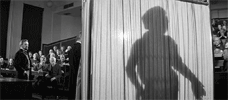
The Elephant Man
1980 -

My Bloody Valentine
1981 -

Who Can Kill a Child?
1976 -

Cannibal Holocaust
1980 -
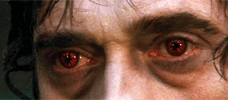
Let Sleeping Corpses Lie
1974 -

John Carpenter’s Vampires
1998 -

Jaws 2
1978 -

A Warning to the Curious
1972 -

Wolf
1994 -

The Survivor
1981 -

Cannibal Ferox
1981 -
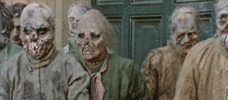
The Nights of Terror
1981 -
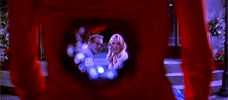
Death Becomes Her
1992 -

Alice, Sweet Alice
1976 -

Body Double
1984 -
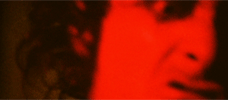
Invocation of My Demon Brother
1969 -
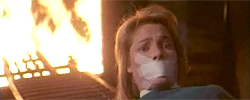
Phantasm II
1988 -

Emanuelle and the Last Cannibals
1977 -

The Wicker Man
1973 -

Maniac Cop
1988 -

The Legend of the 7 Golden Vampires
1974 -
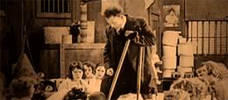
The Penalty
1920 -

Boxing Helena
1993 -

Chew on This
2005 -

Night of the Creeps
1986 -

Night of the Lepus
1972 -

Near Dark
1987 -

Army of Darkness
1992 -

The Brood
1979 -

The Lift
1983 -
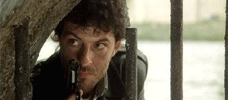
Amsterdamned
1988 -

Silent Witness
1999 -

The Shaft
2001
We don’t do comments anymore, but you may contact us here or find us on Twitter or Facebook.



